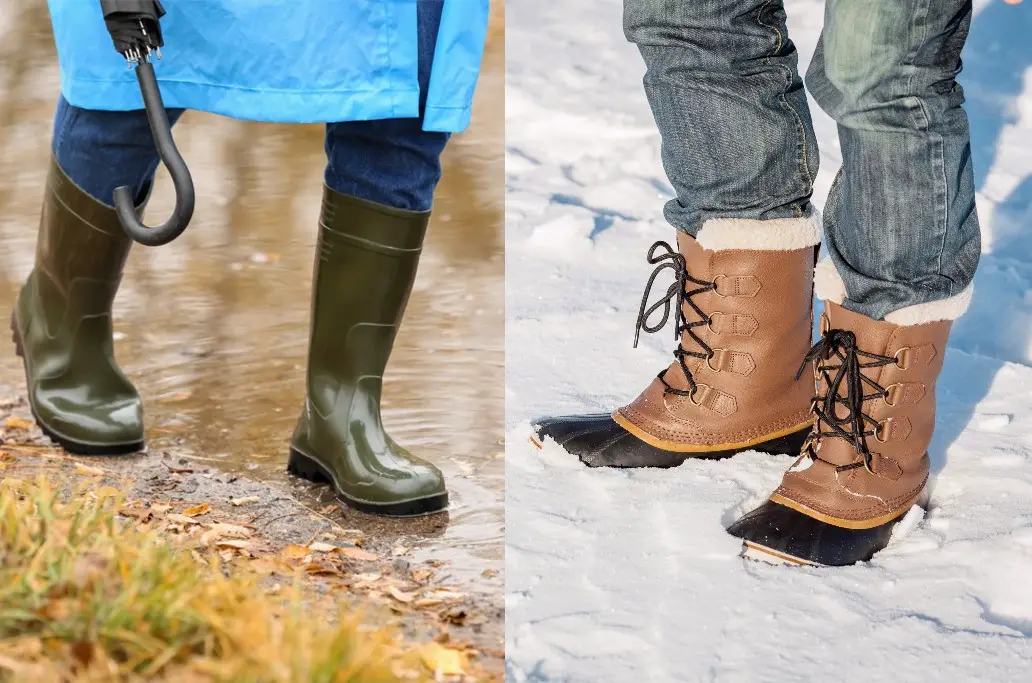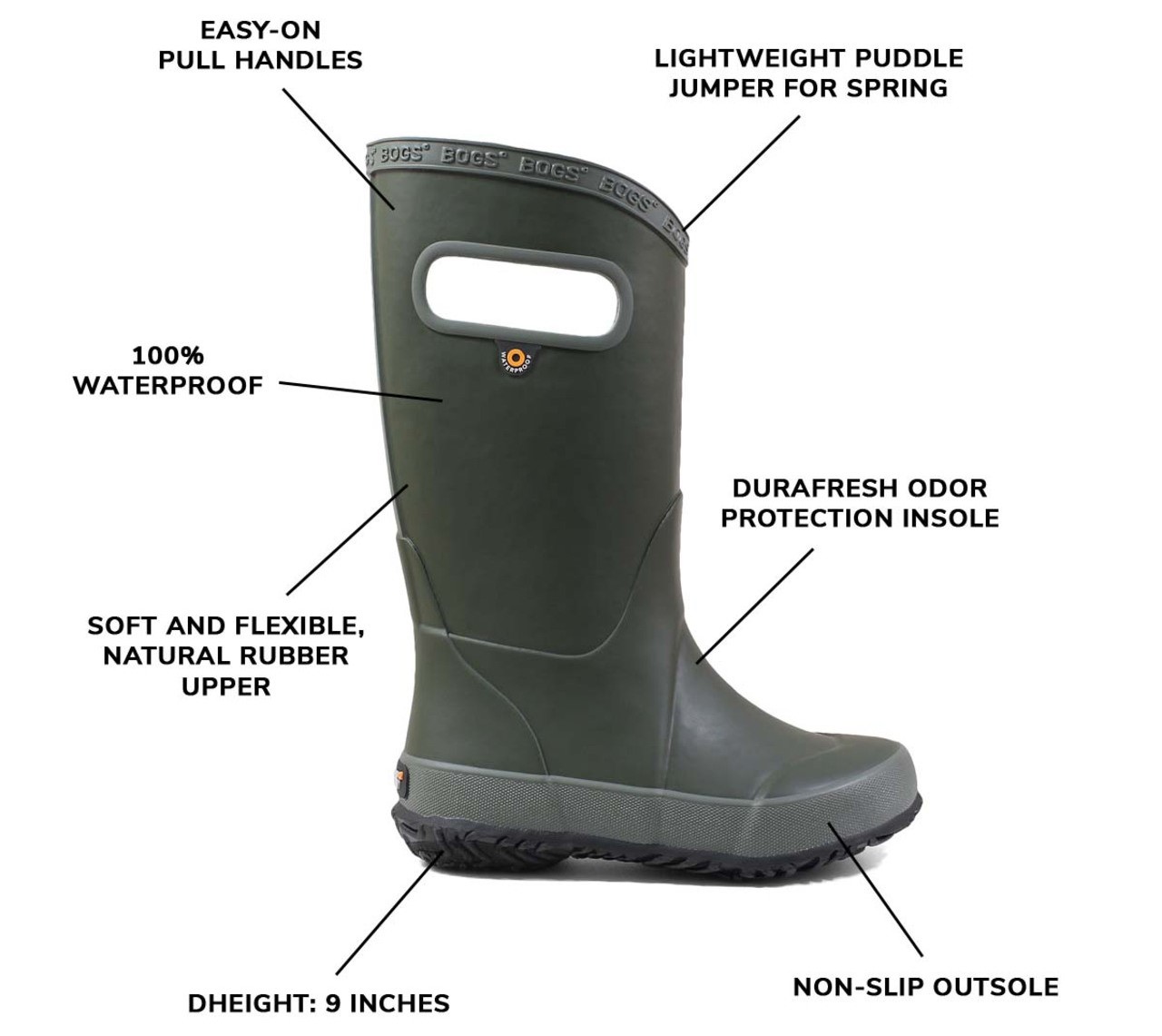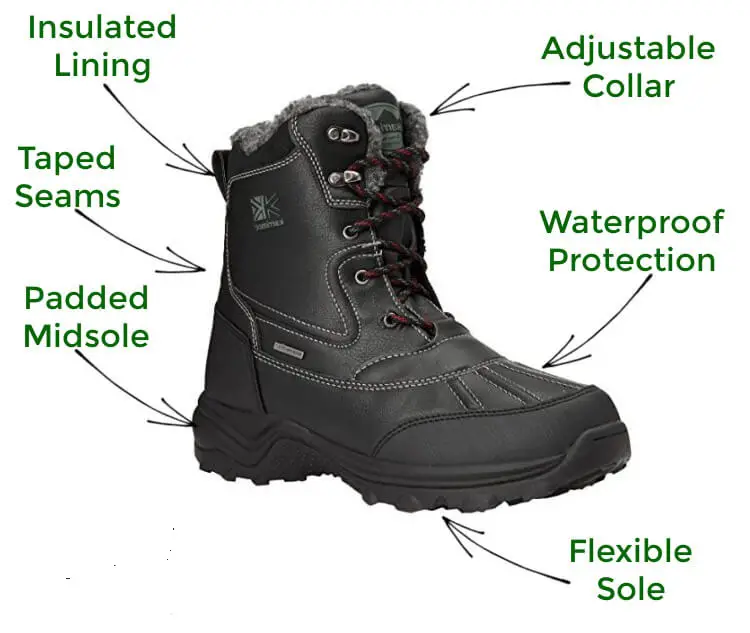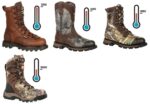Although we all love it when it rains or snows, dressing up for the weather can be difficult, especially when you are off to work.
Apart from the dangers involved in the workplace, you need footwear to protect yourself from the elements. This means, you need boots that can keep your feet dry and warm.
And what better than rain or snow boots so keep your feet safe from water and cold.
Due to the material used in their construction, rain boots are completely waterproof. They are almost always made entirely of PVC or rubber. Whereas, snow boots are typically made of leather, nylon, wool, and occasionally rubber. They are layered to offer insulation and waterproofing. Snow boots will keep your feet warm while rain boots do not provide this feature.
Well there isn’t much difference between the two boots, however, there are a few things rain boots lack which are available in snow boots. Let us check them out.

Difference between Rain boot and Snow boot
1.) Construction material
Rain boots are waterproof boots that are either made of natural rubber or polyvinyl chloride, also known as vinyl or PVC. Whereas, most snow boots are constructed of heavy-duty nylon or leather, both of which are resistant to wind, abrasion, and punctures.
2.) Difference in boot length
In comparison to rain boots, which typically stop at mid-calf, snow boots tend to be taller, typically rising past your knee.
This length difference is due to the fact that rain boots only need to be waterproof, whereas some snow boots require additional insulation, like thick merino wool or sherpa socks, to keep feet warm in colder weather.
3.) Flexibility
Since rain boots frequently don’t have thick insulation built into them, they are typically more flexible and comfortable than snow boots.
A good pair of rain boots are suitable for any muddy situation and are easily adjustable to improve foot comfort.
4.) Height
In comparison to rain boots, which typically stop at mid-calf, snow boots tend to be taller, rising past your knee. They are taller to prevent snow from entering the boot. The higher the better if you reside somewhere where there is a lot of snow.
5.) Insulation
Rain boots are essentially made of rubber and don’t provide insulation or warmth, especially if they have wide openings and don’t fit snugly around your leg or ankle. Whereas the whole point of snow boots is to provide warmth and keep the snow away from the feet.
6.) Weight
The weight of snow and rain boots are different because of the insulation that is present in snow boots. The more insulation a boot has, the more it will weigh. Therefore, when it comes to weight, rain boots are comparatively lighter than snow boots.
7.) Cost
The price of both snow and rain boots are not very different from one another, however, snow boots are costlier if compared.
This is because of added features and insulation that a snow boot provides. A rain boot’s price ranges from $20- $100, whereas, snow boot’s price starts from $50- $200.
See also: Snow Boots Vs Work Boots
Rain boots and its Advantages
The main purpose of rain boots is to provide comfort and defense against harsh conditions. Due to the protection, warmth, and comfort rain boots provide for the feet, many people prefer to wear them.
Let us check it out some of the advantages of rain boots-
1.) They provide comfort during heavy rains.
Your boots are supposed to feel comfortable, and especially boots that are designed to keep your feet dry and safe during rains. But rain boots, since they were made mostly using rubber, were rigid and hard.
But in recent years, rain boots have been incorporated with the most recent technology to provide comfort to the wearer.
2.) Support and reliability
The support that rain boots offer is yet another crucial component. With the right cushioning, and support, your boots will be stable.
Additionally, the boot supports the foot better if more of its surface area is in contact with the ground.
Therefore, rain boots with soles as wide as the upper can be advantageous to get more support for your foot’s movement.

3.) Rain boots have amazing traction
One of the key characteristics of rain boots is traction, which means there is no way you will slip or fall on wet surfaces.
Typically, blown rubber and carbon rubber are used to create traction. In contrast to carbon rubber, the latter is softer and lighter but wears out more quickly.
As a result, blown rubber is typically used at the boot’s forefoot while carbon rubber is mostly used at the heel section.
4.) They provide good shock absorption
A boot’s ability to absorb shock is referred to as cushioning. Early on, rubber was utilized as padding for comfort purposes and since rain boots are mostly made of rubber, they are designed to walk on wet, uneven surfaces.
This is the reason why they provide good shock absorption without letting your feet feel any sort of discomfort.
5.) They are super durable
The type of material, how it is stored, the technology used, and how long it is worn affects how long rain boots will last.
In comparison to wellies or gumboots, PVC rain boots are much more vulnerable to abrasion damage. Conversely, a durable boot in the sole area can be achieved by using the right materials and outsole design.
Snow boots and its Advantages
Snow boots are obviously great for snowy days, but they’re also great in general for extremely chilly, wet days. These boots have a rubber or other similarly impermeable material shell around the foot and are seam-sealed.
Snow boots provide good traction as their soles are typically heavy and thick with deep treads.
Here are the advantages of Snow boots-
1.) They are durable
Snow boots typically need to be very strong because they need to shield your feet from a variety of hazards. They support your ankles and shield your feet from the rain and cold. They are designed to provide long-lasting foot protection.

2.) They provide good ankle support
Your snow boots must support your feet and ankles to deal with a slick surface and unstable ground. They typically have lacing that extends all the way to the top of the boot and have a little extra padding around the foot. This indicates that they offer a snug fit along the entire boot length.
3.) You will never slip wearing a snow boot
Snow boots’ strong grip, which enables you to navigate slick snow and ice with safety, is one of their advantages. The best snow boots have treads with grooves to help you avoid slipping.
4.) Snow boots come with good insulation
As the temperature slowly slips down, you need boots that are built especially to keep your feet warm and comfy. They provide a good amount of insulation so that your feet remain warm even in extreme cold regions.
Consider purchasing boots with a good thermal rating if you plan to travel to a region that gets particularly chilly.
You need different amounts of insulation in snow depending on the type of work and amount of snow present.
Let us discuss what insulation really is.
What is insulation and why is it important in snow boots?
Walking in snow can be tough, especially if you are not wearing proper footwear. Imagine walking in snow in your sandals or regular shoes, your feet will be so cold and prone to frostbite.
And just like that, cold feet can affect the rest of your body in addition to being uncomfortable. Without proper insulated boots, the feet, and in particular the toes, can quickly become vulnerable to complications.
Here is a reference chart for you to understand different insulation weights:
| Weight of the insulation | Temperature rating | Applications |
| 100 grams | Between 40-50° Fahrenheit | It can be worn outside for brief moments. Like the distance when you’re visiting your next door neighbour. |
| 200 grams | Between 30- 40° Fahrenheit | Short walks, quick hikes in the early winter. |
| 400 grams | Between 15- 30° Fahrenheit | Longer hikes, winter backpacking, snowy weather with light moisture. |
| 600 grams | Between -5 to 10° Fahrenheit | Winter backpacking, extreme weather work. |
| 800 grams | Between -20 to -10° Fahrenheit | Extreme cold mountaineering, and extended periods of inactivity in cold weather. |
Can rain boots be used as snow boots?
We now know that you can use your snow boots as rain boots as it provides all of the same features and even more. However, let us figure out if you can use rain boots in the snow.
Wearing rain boots in the snow may be effective depending on how severe the cold is. Rain boots may be worn if the weather is moderate and there is not much snow on the ground.
However, in extreme cold temperatures, your rain boots will not suffice as it lacks insulation to keep your feet warm.
Also, rain boots lack ankle support and walking in snow is a tough task. Therefore, it is advisable to purchase a pair of snow boots to be used just for snow.
Conclusion
Snow boots and rain boots have some fundamental similarities, but they are ultimately more appropriate for different weather conditions. When you just need to stay dry, it’s usually preferable to wear rain boots because they won’t make your feet sweaty.
Snow boots provide the insulation and traction required to withstand blustery winter conditions. They prevent you from slipping and keep your feet warm. However, they are less flexible and heavier, which makes them less suitable for dressing up.







